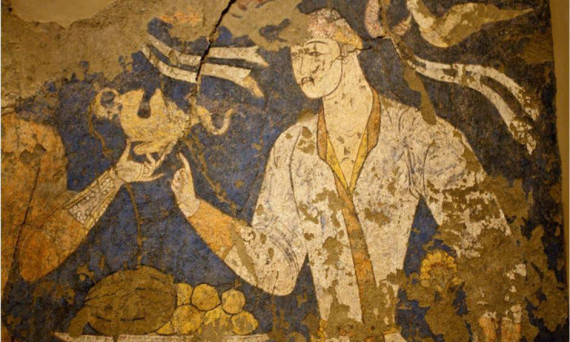The European University at St. Petersburg together with the State Hermitage, Yandex and BrainGarden are creating the Laboratory for Art and Artificial Intelligence (Laboratory I3). Laboratory I3 will be part of the new International School of Arts and Cultural Heritage.
SAINT PETERSBURG — November 12, 2021
A universe of digital copies and images of works of art is rapidly being created across the globe. Machine image recognition tools and artificial intelligence technologies are beginning to be used in museums and by art historians. These are challenges for the IT industry and new opportunities for museums, art historians and curators. Lab I3 is meant to be a creative platform for finding solutions where the arts, museum management and artificial intelligence meet.
As part of the recently created International School of Arts of the European University, Laboratory I3 will be a project environment for educational programs and, at the same time, a kind of "interface" between the IT sector and museums, primarily the State Hermitage Museum.
Working jointly on projects, art historians, computer scientists, and museum curators will develop goals and a common language for app developers. In this context, the laboratory's partners — Yandex and BrainGarden — will be able to better apply developments in the field of pattern recognition and data analysis to the needs of art professionals.
By understanding both the needs of museums and the possibilities of computer technology, the Laboratory will be able to design apps for museums. With the help of such applications, museums will be able to draw together regular visitors and maintain a lively dialogue with them, organizing an urban space around them.
Another of the tasks of the laboratory is to change the existing practices of curators and exhibition coordinators by giving them quantitatively and qualitatively new tools and methods for analyzing the results of their activities.
Earlier, the European University at St. Petersburg announced the creation, in partnership with the State Hermitage, of a new International School of Arts and Cultural Heritage (ISA). ISA will not only provide fundamental knowledge in the field of art history, museum business, and curatorship, but also teach information technology, allow students to work in a new technological environment, and develop skills for interaction with representatives of other fields.
Contacts:
Liya Chechik, Director of the School of Arts and Cultural Heritage
lchechik@eu.spb.ru
